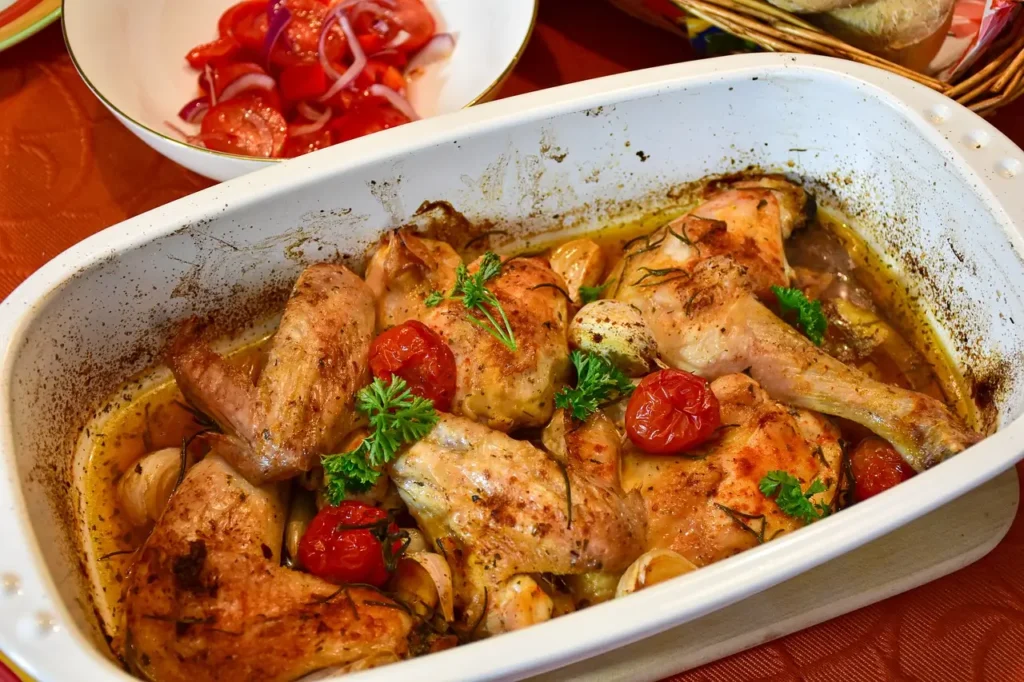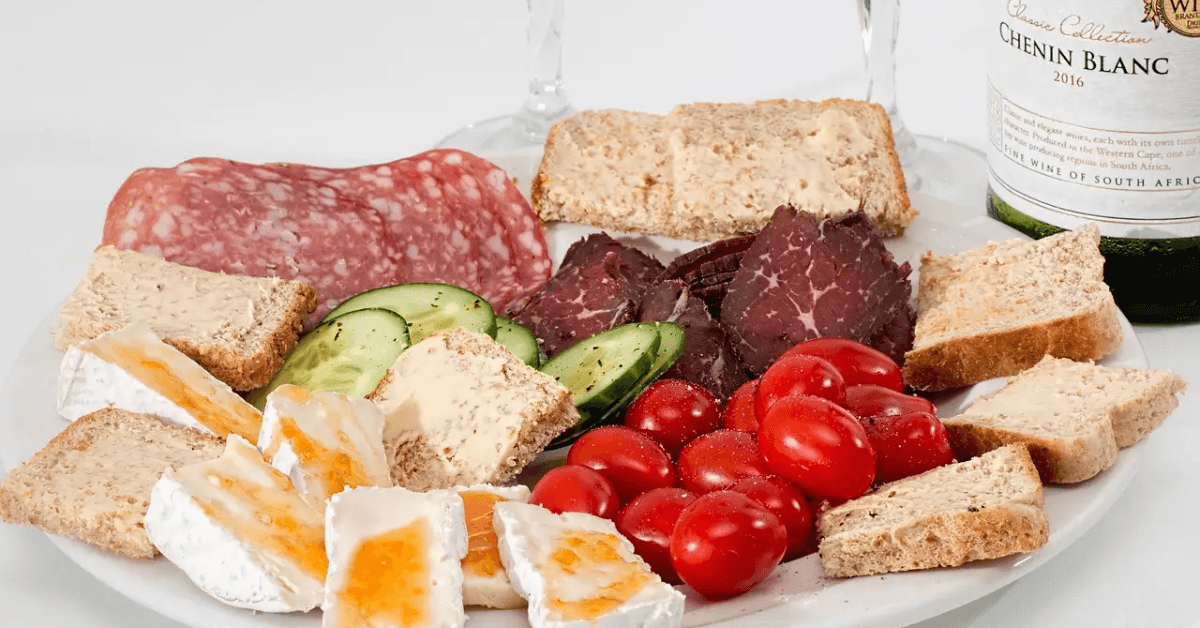Why Consuming 100 Grams of Protein Daily is Essential for Your Body
Protein is more than just a macronutrient—it’s a key player in almost every biological process. Whether you’re repairing tissues, producing enzymes, or fueling workouts, adequate protein intake is non-negotiable.- Muscle repair and growth: Protein rebuilds muscle fibers damaged during workouts, making them stronger.
- Energy regulation: Protein helps stabilize blood sugar, providing sustained energy throughout the day.
- Weight management: It increases feelings of fullness, reducing overeating and helping with weight control.
Top Benefits of Eating 100 Grams of Protein Daily
Meeting your daily protein requirements offers numerous health advantages:- Improves recovery after workouts by reducing muscle soreness.
- Supports metabolic processes that regulate fat loss and energy production.
- Enhances the body’s ability to maintain and repair tissues.
How Much Protein Do You Really Need?
The amount of protein you need varies depending on your activity level, body weight, and goals. Below are general guidelines to determine your optimal intake:- Sedentary lifestyle: 0.8 grams of protein per kilogram of body weight.
- Active individuals: 1.2–2.0 grams of protein per kilogram of body weight.
- 56 grams/day if sedentary.
- 84–140 grams/day if active.
Special Considerations for Vegans
Vegans often face unique challenges in meeting their protein goals, as plant-based proteins can sometimes lack certain essential amino acids. However, with proper planning, it’s entirely possible to hit 100 grams of protein on a vegan diet.- Combine protein sources: Pair foods like rice and beans to create a complete amino acid profile.
- Choose nutrient-dense options: Foods like lentils, tofu, tempeh, and quinoa are excellent for maximizing protein intake.
Quick Tips for Tracking and Achieving Your Protein Goals
- Use tracking tools: Apps like MyFitnessPal and Cronometer help calculate your intake and adjust your meals to meet your daily protein requirements.
- Spread protein throughout the day:
- Breakfast: 20–30 grams (e.g., tofu scramble or a protein smoothie).
- Lunch: 25–35 grams (e.g., lentil soup or a tempeh salad).
- Dinner: 30–40 grams (e.g., quinoa bowl with chickpeas).
- Snacks: 10–15 grams (e.g., roasted nuts or vegan yogurt).
- Leverage protein powders: Adding a vegan protein shake to your routine is an easy way to boost intake.
Vegan-Friendly Protein Sources
 Transitioning to a vegan diet while meeting your daily protein goals might seem challenging, but it’s easier than you think. By understanding the most protein-dense plant-based foods and incorporating them into your meals, you can achieve the benchmark of 100 grams of protein daily. This section highlights some of the best vegan protein sources and offers practical tips for making them a regular part of your diet.
Transitioning to a vegan diet while meeting your daily protein goals might seem challenging, but it’s easier than you think. By understanding the most protein-dense plant-based foods and incorporating them into your meals, you can achieve the benchmark of 100 grams of protein daily. This section highlights some of the best vegan protein sources and offers practical tips for making them a regular part of your diet.Top Vegan-Friendly Foods to Reach 100 Grams of Protein Daily
Plant-based diets offer a variety of high-protein foods that are also rich in fiber, vitamins, and minerals. Below are some of the best options for vegans looking to increase their protein intake:- Lentils: 18 grams of protein per cooked cup. Perfect for soups, stews, or salads.
- Chickpeas: 15 grams of protein per cooked cup. Use in hummus, curries, or roasted for snacks.
- Tofu: 20 grams of protein per 100g. Extremely versatile, tofu can be grilled, scrambled, or added to stir-fries.
- Edamame: 17 grams of protein per cooked cup. A great snack or addition to bowls and salads.
- Seitan: 21 grams of protein per 100g. Known as “wheat meat,” it’s an excellent meat substitute for stir-fries or sandwiches.
- Quinoa: 8 grams of protein per cooked cup. A complete protein, quinoa is ideal as a base for bowls or sides.
- Vegan Greek Yogurt: About 6–10 grams of protein per 100g, depending on the brand. Pair it with fruits or granola for a high-protein snack.
Creative Recipes to Hit 100g Protein Daily on a Vegan Diet
Eating the same dishes daily can get boring, so it’s essential to experiment with creative recipes that incorporate these foods in delicious ways. Here are some ideas:- Breakfast:
- Tofu scramble with vegetables (20–25g protein).
- Protein smoothie with almond milk, vegan protein powder, and peanut butter (30g protein).
- Lunch:
- Lentil soup or chickpea salad sandwich (25g protein).
- Quinoa bowl with roasted vegetables and tahini dressing (20–25g protein).
- Dinner:
- Seitan stir-fry with broccoli and soy sauce (30g protein).
- Spaghetti with lentil-based marinara sauce (25g protein).
- Roasted edamame or chickpeas (10–15g protein per serving).
- Vegan yogurt topped with nuts and seeds (15g protein).
Protein-Packed Snacks for Vegans
Snacking smartly is a great way to boost your protein intake without feeling overly full. Here are some options:- Trail mix: A mix of almonds, pumpkin seeds, and dried fruit (10–12g protein per handful).
- Vegan protein bars: Check for options with 15–20g of protein per bar.
- Hummus with raw vegetables: Chickpeas in hummus provide about 8g of protein per 2 tablespoons.
Vegan Protein Powders and Shakes
If you’re struggling to meet your 100g protein goal, incorporating vegan protein powders into your diet can make a big difference. These powders are made from sources like pea, rice, or hemp protein and can easily be added to shakes, smoothies, or even baked goods.- Benefits of protein powders:
- Convenient for busy schedules.
- Provide complete proteins with all essential amino acids.
- Available in various flavors to suit your taste.
- 1 scoop vegan protein powder (20–25g protein).
- 1 cup almond milk (1g protein).
- 1 banana (1g protein).
- 1 tablespoon peanut butter (4g protein).
- Blend together for a quick and delicious 30g protein shake.
Strategies for Achieving 100g Protein Daily
 Hitting 100 grams of protein daily on a vegan diet requires a combination of careful planning and smart eating strategies. By understanding how to distribute protein across meals, selecting high-protein options, and using tools to track your progress, you can make this goal achievable and sustainable. In this section, we’ll guide you through practical strategies for meeting your protein requirements.
Hitting 100 grams of protein daily on a vegan diet requires a combination of careful planning and smart eating strategies. By understanding how to distribute protein across meals, selecting high-protein options, and using tools to track your progress, you can make this goal achievable and sustainable. In this section, we’ll guide you through practical strategies for meeting your protein requirements.How to Hit 100 Grams of Protein Daily with Easy Strategies
Achieving your protein goals can be simple if you break it down into manageable portions across meals and snacks. Here’s a sample plan to help you hit 100g of protein in a day:- Breakfast (25g protein):
- Tofu scramble (15g protein).
- Whole-grain toast with almond butter (10g protein).
- Morning Snack (15g protein):
- Vegan protein shake made with pea protein powder (15–20g protein).
- Lunch (30g protein):
- Quinoa salad with edamame and roasted chickpeas (20g protein).
- Side of hummus and carrot sticks (10g protein).
- Afternoon Snack (10g protein):
- Mixed nuts and seeds (10g protein).
- Dinner (25g protein):
- Lentil stew with a side of whole-grain bread (25g protein).
Is 100 Grams of Protein a Day Too Much?
While protein is essential, consuming excessive amounts can lead to potential issues, even on a plant-based diet. The question “Is 100g of protein a day too much?” depends on your body weight, activity level, and overall health.- For most active adults, 100g is a reasonable target.
- Risks of excessive protein include kidney strain, digestive discomfort, and imbalanced nutrient intake.
Tips to Avoid Overdoing Protein
- Monitor portion sizes for high-protein foods.
- Use tracking apps like Cronometer to ensure you’re not exceeding your target.
- Balance protein intake with carbohydrates, healthy fats, and fiber for a well-rounded diet.
The Role of Timing in Protein Intake
The timing of your protein consumption can impact how effectively your body uses it for muscle repair and energy.- Post-workout meals: Consume 20–30g of protein within an hour after exercise to support muscle recovery.
- Even distribution: Spread protein evenly across meals to maximize absorption and prevent excess from being stored as fat.
Common Pitfalls to Avoid
Many people struggle to meet their protein targets because of the following mistakes:- Skipping meals: Reduces opportunities to consume enough protein.
- Over-relying on one source: Variety is essential to get a full range of amino acids.
- Ignoring snacks: Small, protein-rich snacks can make a big difference in reaching your goal.
Best Tools to Track 100 Grams of Protein Per Day
Leveraging modern tools can help you stay on top of your protein intake and identify areas for improvement:- Apps: MyFitnessPal, Cronometer, and LoseIt! allow you to track protein and other nutrients.
- Meal prepping: Plan and prepare meals in advance to ensure you’re meeting your protein goals every day.
- Food scales: Weigh portions to accurately track the protein content of your meals.
Comparing Protein Sources
 When striving to hit 100 grams of protein daily, it’s essential to know which foods offer the best protein-to-calorie ratio and how plant-based options compare to animal-based sources. Understanding these differences helps you make informed decisions and optimize your diet for protein intake while staying vegan.
When striving to hit 100 grams of protein daily, it’s essential to know which foods offer the best protein-to-calorie ratio and how plant-based options compare to animal-based sources. Understanding these differences helps you make informed decisions and optimize your diet for protein intake while staying vegan.What Gives the Most Protein Per 100g?
Different foods provide varying amounts of protein per serving. Here’s a comparison of protein-rich vegan foods alongside some commonly used non-vegan options:Top Vegan Sources (Protein per 100g):- Seitan: 21g
- Tofu: 20g
- Tempeh: 19g
- Lentils (cooked): 9g
- Quinoa (cooked): 8g
- Edamame (cooked): 11g
- Chickpeas (cooked): 8g
- Vegan Greek Yogurt: 6–10g (depending on the brand)
- Chicken breast (cooked): 31g
- Greek yogurt (plain): 10g
- Eggs (2 large): 12g
- Tuna (canned): 25g
Advantages of Vegan Protein Sources
Vegan protein sources bring unique benefits to the table, including:- Heart health: Plant-based foods are naturally cholesterol-free and low in saturated fats.
- Sustainability: Producing plant proteins has a lower environmental impact than raising animals.
- Dietary fiber: Foods like lentils and chickpeas offer fiber, which improves digestion and keeps you full longer.
Why Blending Protein Sources is Key
One challenge with plant-based proteins is that they may not always provide a complete amino acid profile (all essential amino acids your body needs). Combining different protein sources ensures you receive the full spectrum of amino acids.Smart Pairings for Complete Proteins:- Rice and beans: Together, they create a complete protein with 7g per cup of each.
- Hummus and whole-grain pita: Chickpeas and whole grains combine to deliver essential amino acids.
- Quinoa and lentils: A nutrient-dense pairing packed with fiber and protein.
High-Protein Meal Ideas
Incorporate the most protein-dense vegan foods into your meals with these ideas:- Protein Power Bowl: Quinoa, tempeh, edamame, and a tahini dressing.
- Hearty Lentil Stew: Add sweet potatoes and kale for extra nutrients.
- Tofu Stir-Fry: Sauté tofu with broccoli, carrots, and soy sauce.
Comparing Vegan and Non-Vegan Protein Shakes
Protein shakes are a convenient way to boost daily protein intake. Here’s how vegan protein powders stack up against whey-based powders:- Vegan Protein Powders:
- Sources: Pea, rice, or hemp protein.
- Protein per serving: 20–25g.
- Advantages: Dairy-free, hypoallergenic, and eco-friendly.
- Whey Protein Powders:
- Protein per serving: 20–30g.
- Drawbacks: May cause digestive issues for those with lactose intolerance.
Optimizing Protein Absorption
Even if you’re consuming enough protein, your body’s ability to absorb and utilize it depends on several factors. Here’s how to maximize protein absorption:- Eat enough calories: Ensure you’re eating sufficient calories to prevent protein from being used as an energy source.
- Balance your diet: Pair protein-rich foods with healthy fats and carbs for better digestion.
- Stay hydrated: Proper hydration aids in nutrient absorption and overall digestion.
